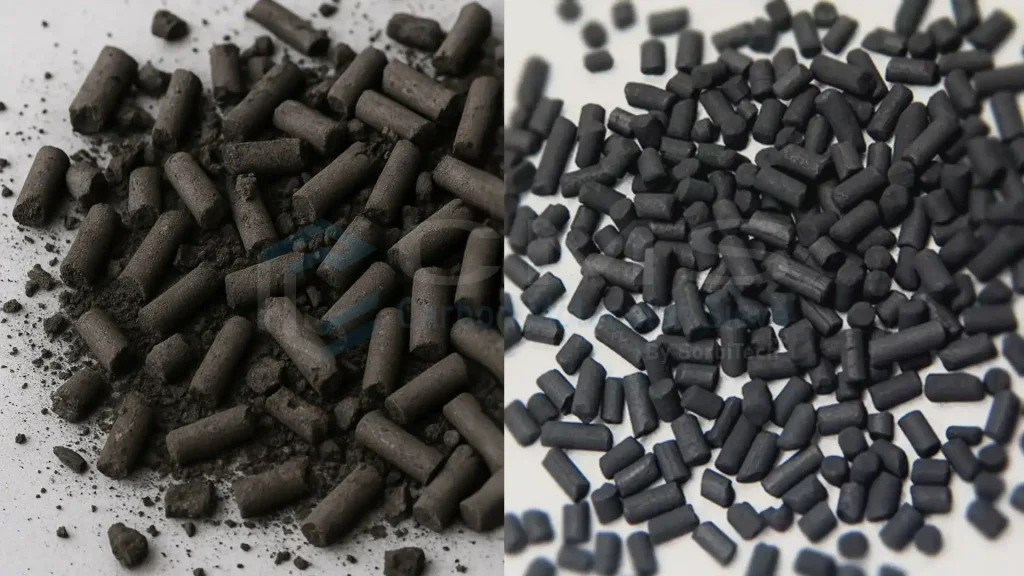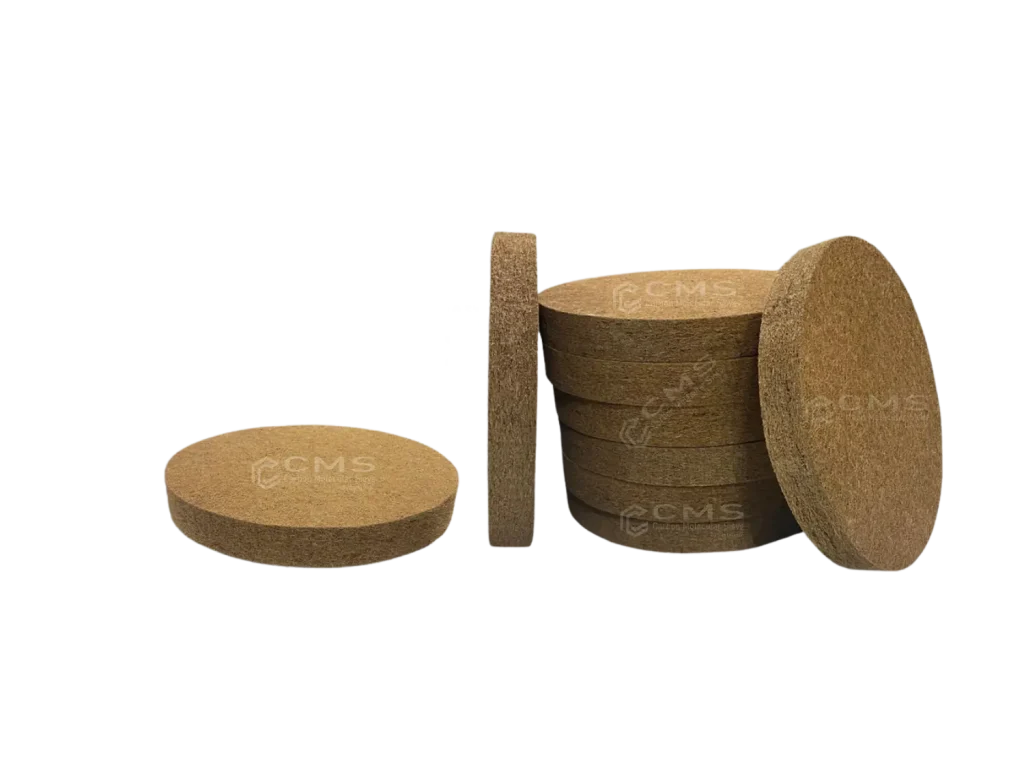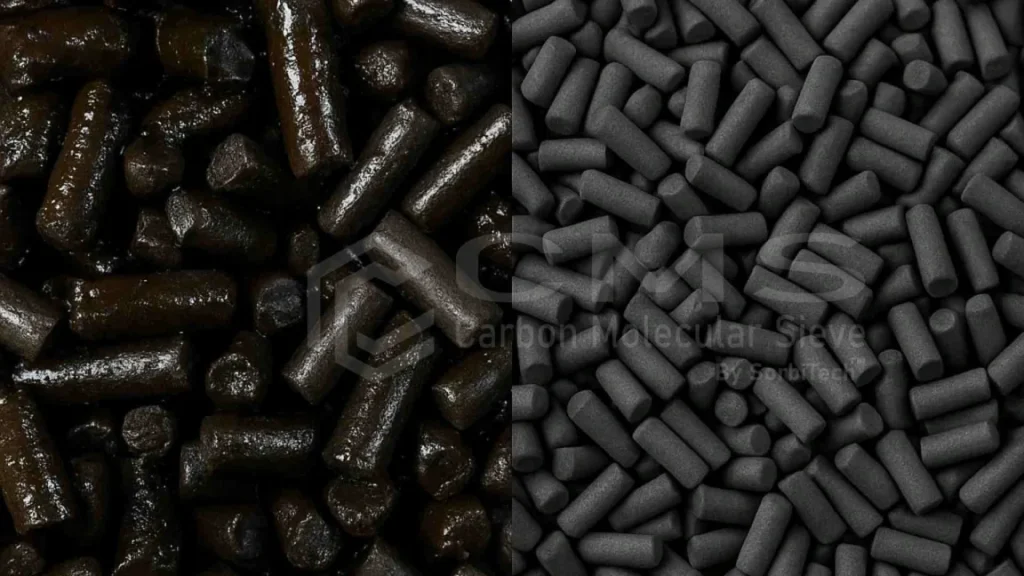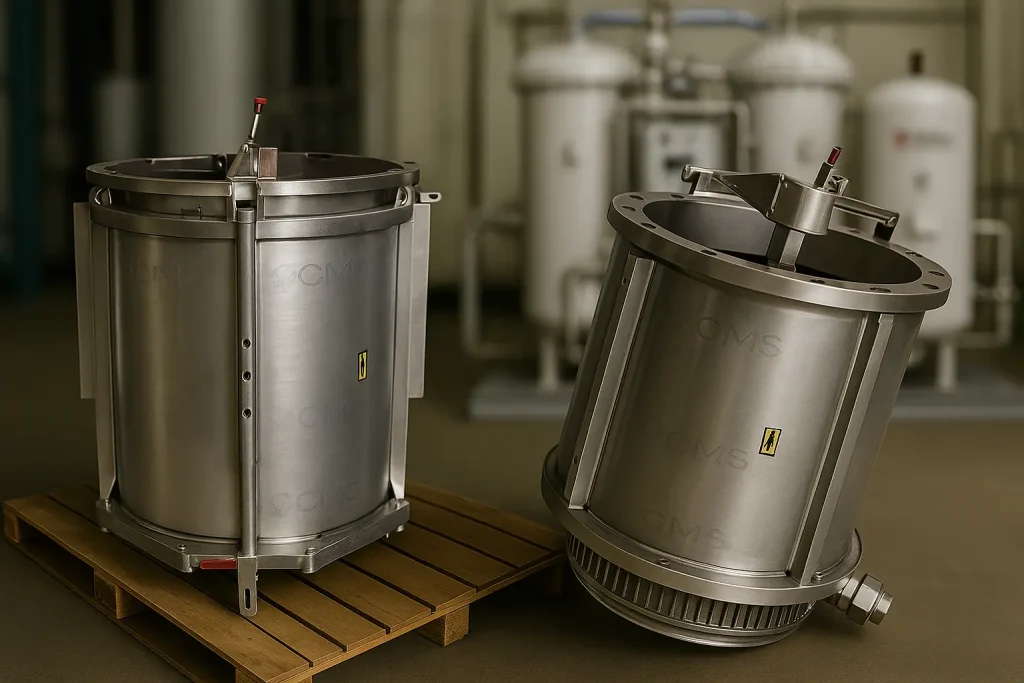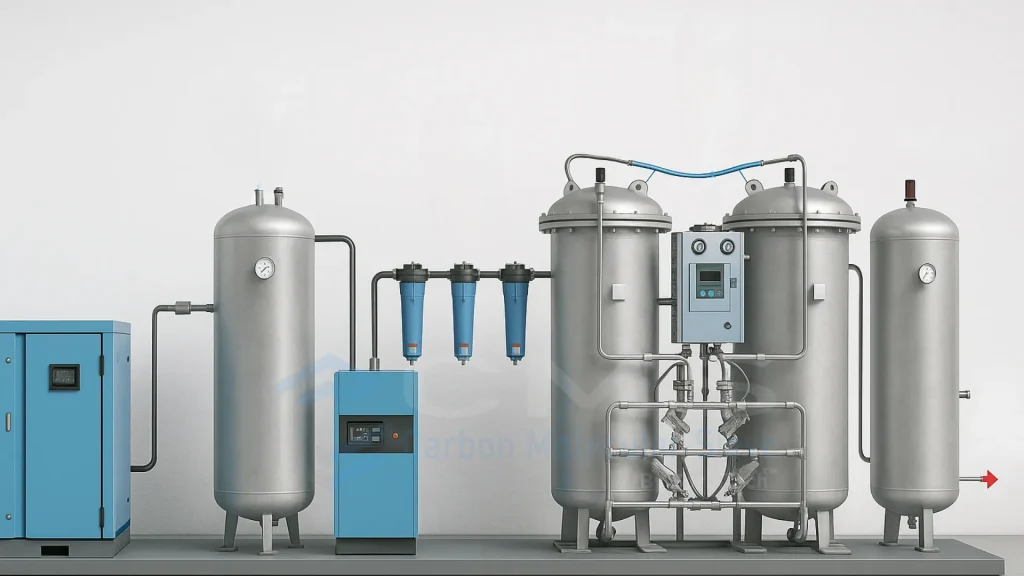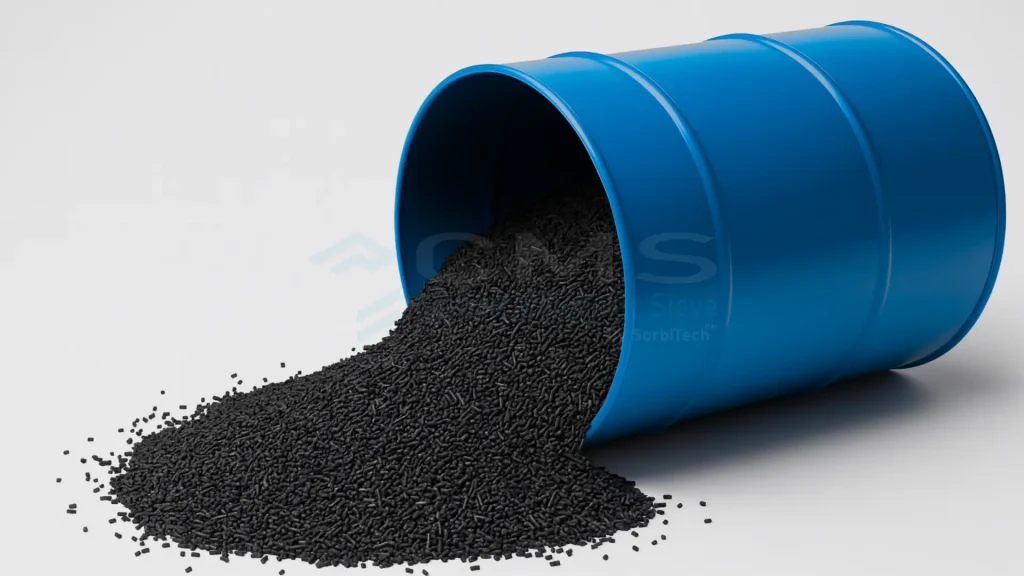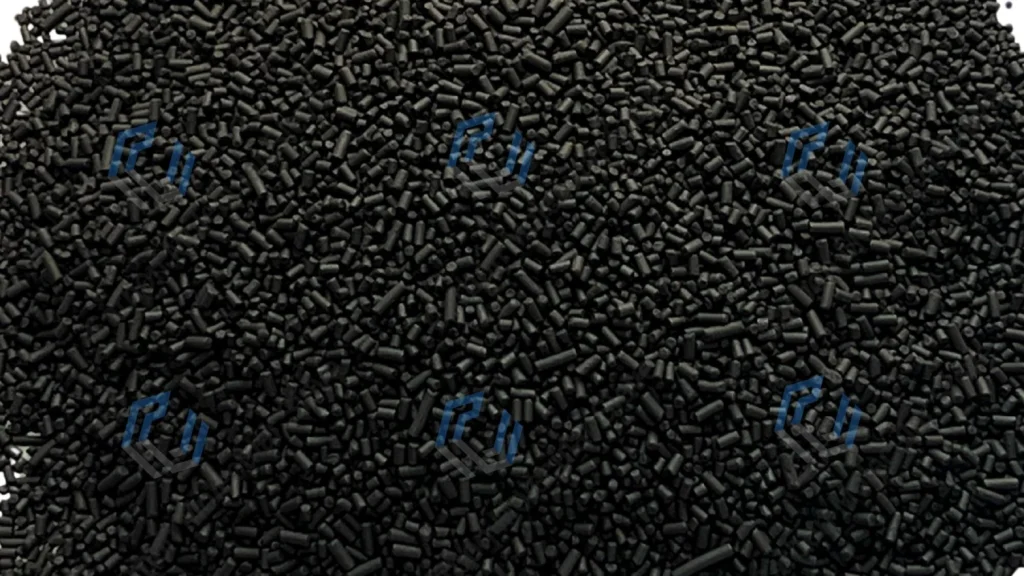| Blogs
How to Solve CMS Ash/Dust Emission in PSA Nitrogen Generators?
When a Carbon Molecular Sieve bed in a PSA nitrogen generator gives off constant ash or dust, it usually points to particle breakage or improper bed stability. long period of non use can also contribute to this issues. This problem reduces purity, clogs filters, and…
Compression pads (CFL) for Stabilizing the Carbon Molecular Sieve Bed
What is Compression Pads (CFL)? Compression Pads (CFL), often made from rubberized coconut fiber mats, are used in PSA nitrogen generators to hold the Carbon Molecular Sieve (CMS) bed firmly in place. They cushion the CMS during pressure swings, prevent particle movement and wear. It…
How to Replace a CMS Bed After Oil or Water Contamination?
When a PSA nitrogen generator has run for an extended period, the carbon molecular sieve (CMS) inevitably reaches end of life adsorption capacity declines, nitrogen purity falls, and overall N₂ output drops. Many users also observe rising pressure drop and visible fines carryover (often called…
Optimize CMS Filling in Nitrogen Generators using Snowstorm Filling
Snowstorm Filling Method The Snowstorm Filling Method is a specialized process used in PSA nitrogen generators to load Carbon Molecular Sieve into the adsorption columns. Instead of dumping the CMS directly, the material gently poured in under a controlled effect. This ensures the granules settle…
Nitrogen Generation by Pressure Swing Adsorption (PSA)
Pressure Swing Adsorption (PSA) nitrogen generation is a widely used technology to produce high purity nitrogen gas (N₂) directly from compressed air. It relies on special adsorbent materials mainly Carbon Molecular Sieve to separate oxygen from nitrogen. Carbon molecular sieves traps oxygen and nitrogen flow…
How Can We Maintain and Load CMS in Nitrogen Generators
Proper loading and maintenance of Carbon Molecular Sieve (CMS) are critical for ensuring consistent nitrogen purity, extending the life of the adsorbent, and keeping a PSA nitrogen generator reliable over time. CMS works at the heart of the generator, separating oxygen from nitrogen, but it…
What is Carbon Molecular Sieve?
What is Carbon Molecular Sieve (CMS)? Carbon Molecular Sieve (CMS) is a specialized porous material made of carbon that can separate gases based on molecular size and shape, with uniform pores about 0.3 - 0.5 nanometers wide, In the most common application Pressure Swing Adsorption (PSA) Nitrogen Generation…
Related Topics
- What is Carbon Molecular Sieve?
- How Can We Maintain and Load CMS in Nitrogen Generators
- Nitrogen Generation by Pressure Swing Adsorption (PSA)
- Optimize CMS Filling in Nitrogen Generators using Snowstorm Filling
- How to Replace a CMS Bed After Oil or Water Contamination?
- Compression pads (CFL) for Stabilizing the Carbon Molecular Sieve Bed
- How to Solve CMS Ash/Dust Emission in PSA Nitrogen Generators?
